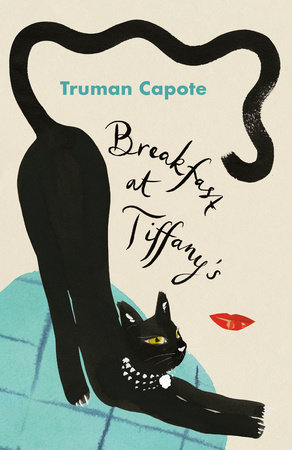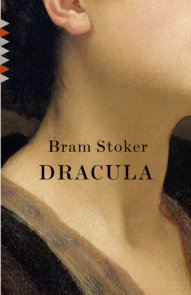READERS GUIDE
The discussion questions and other material that are intended to enhance your group’s conversation about Breakfast at Tiffany’s, Truman Capote’s brilliant novella about two friends living in a Manhattan apartment building during World War II, and the three classic short stories also included in the volume.Introduction
During World War II, an aspiring writer moves into a Manhattan brownstone where he befriends his neighbor, a funny, warm, and utterly unique young woman who calls herself Holly Golightly. Holly has a great sense of style, an independent way of thinking, and a constant stream of men—usually older than herself—coming to visit. In fact, she and the narrator become friends when she comes up the fire escape to evade her current drunken guest. Eventually the narrator learns about his friend’s previous life as an orphan and child bride in Texas when her husband visits in an unsuccessful bid to bring her home. When she is caught up in a racketeering case against the mobster she visits each week in jail, Holly disappears rather than testify against him. In this seductive, wistful masterpiece, Truman Capote created a woman whose name has entered the American idiom and whose style is a part of the literary landscape.This volume also includes three of Capote’s best-known stories: “House of Flowers,” “A Diamond Guitar,” and “A Christmas Memory,” which the Saturday Review called “one of the most moving stories in our language.”
Questions and Topics for Discussion
A. Breakfast at Tiffany’s
1. The story begins when the bartender Joe Bell and the narrator talk about Mr. Yunioshi’s report that Holly Golightly had been living in Africa. What aura does the opening chapter lend to the character of Holly? What feelings does Holly evoke in Joe Bell?
2. What does Holly mean by her advice about powder-room change to Sid Arbuck, when she refuses to let him into her apartment (12, 21)? Holly tells the narrator, “I’ve simply trained myself to like older men, and it was the smartest thing I ever did” (16). Why has she trained herself? How does Holly support herself?
3. Holly decides to call the narrator “Fred” after her brother. Why, after her brother’s death, does she stop calling him Fred (63)?
4. O. J. Berman tells the narrator that Holly is a phony. What does he mean? Why has she decided not to become a Hollywood actress (24-25, 31)?
5. What does Holly mean by “the mean reds”? Why does Tiffany’s, the luxury jewelry store on Fifth Avenue, make her feel better (32)?
6. When the narrator and Holly tell each other stories about their childhoods, Holly admits that hers is untrue (43-44). Is Holly dishonest, or is she, like the narrator, a kind of storytelling artist? How would you describe Holly’s approach to life?
7. Why is Rusty Trawler a good choice as a boyfriend for Holly? Why does Holly allow the narrator to see her in the bathtub and in other states of undress? What is assumed but never stated about his sexuality?
8. The story takes a surprising turn with the arrival of Doc Golightly. How is he described? How do his story, and the photograph he shows the narrator, transform your understanding of Holly and her past (52-56)?
9. Holly has transformed herself into a stylish New Yorker, but how much is she still attached to her past? How does Holly explain her feelings for Doc (58)? How does she react to the death of her brother Fred (63-67)?
10. The narrator sees a birdcage in an antique shop, and later Holly buys it for him as a surprise gift, but tells him never to keep a living thing in it (47). Later, she tells Joe Bell, “Never love a wild thing, Mr. Bell” (59). Does Holly imply anything about herself and her relationships with these references?
11. Holly explains her ideas about ethics: “It’s a bore, but the answer is good things only happen to you if you’re good. Good? Honest is more what I mean. Not law-type honest…but unto-thyself-type honest. Be anything but a coward, a pretender, an emotional crook, a whore: I’d rather have cancer than a dishonest heart” (66). Would you agree? Does Holly have a high standard of behavior for herself?
12. While Holly seems genuinely to care about the narrator, she seems to have no other real friends. At the party, she makes the gathering of men understand that Mag Wildwood has a sexually transmitted disease (36). Does her opportunism with regard to the rich men in her life also extend to Mag? Does she see Mag as a rival? Why then does she decide to let Meg move in with her (42)?
13. The narrator describes a walk with Holly to Chinatown, a chow mein supper and a walk across the Brooklyn Bridge. “On the bridge, as we watched the seaward-moving ships pass between the cliffs of burning skyline,” she tells him that many years hence, she will bring her “nine Brazilian brats” back to see New York (67). Why is the narrator sad at this moment? Is theirs an ideal friendship?
14. We are reminded of the suffering in Holly’s life when she loses “the heir,” when José leaves her, and when she tells the narrator about her hallucinations of “the fat woman” after Fred’s death (77-82). Considering what Holly has been through in her earlier life and the fact that she is now under criminal indictment, what do you think of her attitude toward her future?
15. During the drive to the airport, Holly lets her cat out onto the street and then regrets it. The narrator fulfills his promise to find the cat—who has a new home—and he completes the tale with the hope that Holly, too, has arrived where she belongs. Capote told The Paris Review, “Finding the right form for your story is simply to realize the most natural way of telling the story. The test of whether or not a writer has divined the natural shape of his story is just this: after reading it, can you imagine it differently, or does it silence your imagination and seem to you absolute and final?” Is Breakfast at Tiffany’s an example of Capote’s ideal? Do you find the story’s structure, with its interlocking beginning and ending, satisfying?
16. Norman Mailer wrote, “Truman Capote is the most perfect writer of my generation. He writes the best sentences word for word, rhythm upon rhythm.” Ask each person in your group to choose a favorite sentence, and discuss why Capote is such a great prose stylist.
B. “House of Flowers”
1. Why are Rosita and Baby surprised that Ottilie will not return to the city with them?
Why is it significant to their bond that Royal and Ottilie are both country people, and both believe in voodoo? Why does she stay with him after he has punished her?
C. “A Diamond Guitar”
1. Given the description of Mr. Schaeffer (111-112), why do you think he is drawn to Tico Feo? What details of description and character intensify the emotion of this love story?
D. “A Christmas Memory”
1. How does the scarcity of money bring out the creativity and generosity in these two friends?
2. The old woman realizes, after they fly their kites together, that she doesn’t have to wait for death to see divinity: “I’ll wager at the very end a body realizes the Lord has already shown Himself. That things as they are…just what they’ve always seen, was seeing Him. As for me, I could leave the world with today in my eyes” (141). Why is this insight especially relevant on Christmas? Why, when the boy later hears the news of her death, does he feel that it as “sever[s] from me an irreplaceable part of myself, letting it loose like a kite on a broken string” (142)?
About this Author
Truman Capote was a native of New Orleans, where he was born on September 30, 1924. His first novel, Other Voices, Other Rooms, was an international literary success when first published in 1948, and accorded the author a prominent place among the writers of America’s postwar generation. He sustained this position subsequently with short-story collections (A Tree of Night, among others), novels and novellas (The Grass Harp and Breakfast at Tiffany’s), some of the best travel writing of our time (Local Color), profiles and reportage that appeared originally in The New Yorker (The Duke in His Domain and The Muses Are Heard), a true-crime masterpiece (In Cold Blood), several short memoirs about his childhood in the South (A Christmas Memory, The Thanksgiving Visitor, and One Christmas), two plays (The Grass Harp and House of Flowers) and two films (Beat the Devil and The Innocents).Mr. Capote twice won the O. Henry Memorial Short Story Prize and was a member of the National Institute of Arts and Letters. He died in August 1984, shortly before his sixtieth birthday.






















